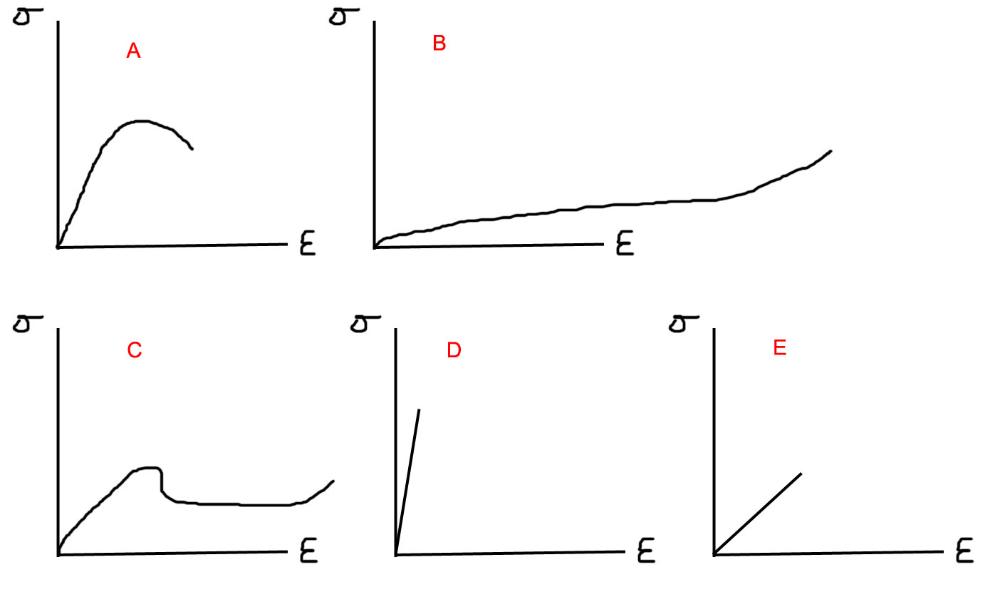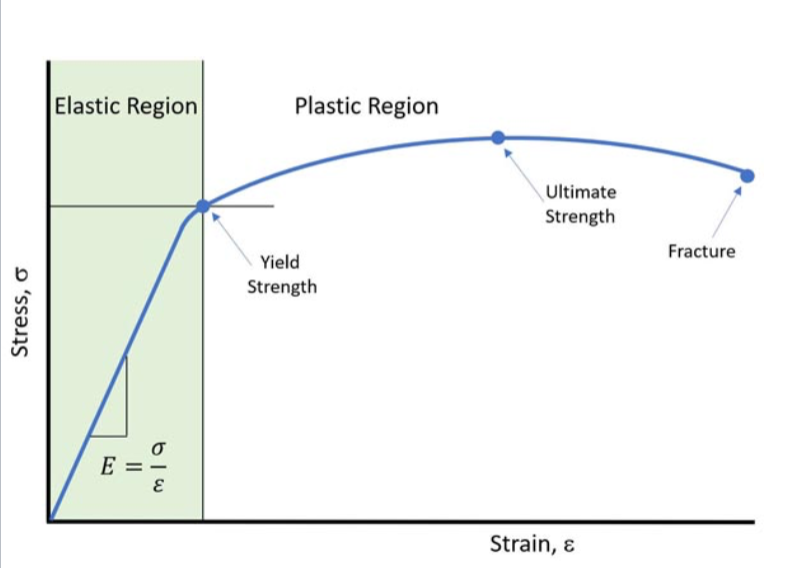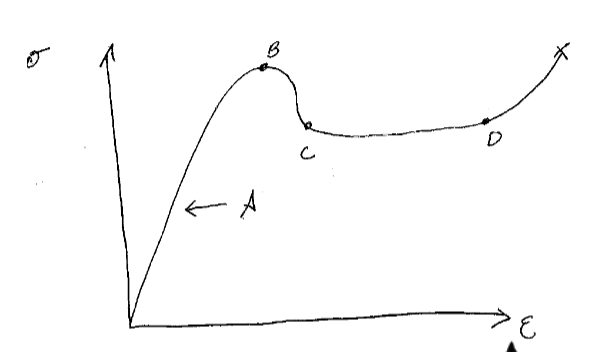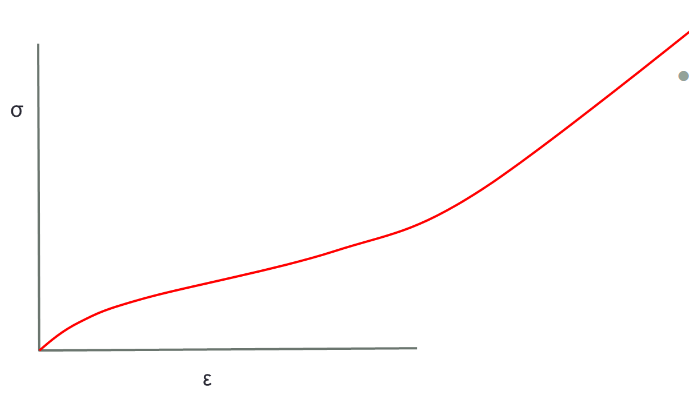
Match material to curves
A- metal
B- elastomer
C- thermoplastic
D- ceramic
E- thermoset
(Tension)
What equation do you use only for elastics?

Hookes law
(Tension)
What equation do you use for engineering stress?

Can always be used for elastics
(Tension)
What equation do you use for engineering strain?

Can always be used for elastics
(Tension test)
What equation do you use for percent elongation?

(Tension test)
What equation do you use for percent reduction in area?

only for after testing
What are the equations used for 3 point bends?
Flexural strength (modulus of rupture) and modulus of elasticity in bending (flexural modulus)
What equation is used for fracture toughness/ failure


What has the highest stiffness and no ductility?
D

What has moderate stiffness and ductility?
A
What are 3 situations where failure can occur at applied stress below yield strength?
1. fatigue
2. creep
3. stress corrosion cracking
Know the points on the tensile test curve.
What part is elastic and what is plastic

green - elastic
white - plastic
Why does the tensile curve for a metal reach a peak and then drop off again?
Because of necking. Deformation is not uniform
What is poisson’s ratio? and is it elastic or plastic?
ratio of longitudinal to and axial strains (u or v)
it is always positive and elastic
What is the 0.2% offset yield strength? and why is it used?
It is the intersection of the curve where it bends. its used to show yield strength and where deformation becomes permanent.
What is the glass transition temperature?
when the change in density with temperature changes slope (Tg)
Which materials is the glass transition temperature important?
glass, thermoplastic, elastomer

label the points of the slowly loaded thermoplastic polymer graph
A- elastic deformation
B- necking begins
C-necking grows
D- chains align and stress continues
be able to draw the elastomer tension test

What is viscoelasticity?
The property of materials that exhibit both viscous and elastic characteristics when undergoing deformation.
In what materials does viscoelastic behavior occur?
thermoplastics and elastomers
Why are ceramics not often tested in tension?
they are very stiff and not really ductile
What is a bend test and what is it used for?
To test brittle materials. small flaws can cause early failures
How is hardness tested in a metal?
Using test such as brinell, rockwell, vickers, and microhardness
What is an impact test and how is it performed?
to test the strain rate.
some common types are charpy and izod.
What is the ductile to brittle transition temperature? (DBTT)
Transition temperature where failure mode transforms from ductile to brittle (BCC does and FCC does not)
What is the difference between ductile and brittle failure?
Ductile- Slow, high energy, and plastic deformation before failure
Brittle- fast, no necking, and little plastic deformation
What happens to the stress near a flaw in a structure?
Stress is amplified or concentrated at the tip of the flaw
What is the fracture toughness of a material and why is it important?
the ability of a material containing a flaw to withstand an applied load (KiC and the units are MPa)
What conditions lead to increased fracture toughness?
ductility and increased temperatures increase fracture toughness.
What conditions lead to decreased fracture toughness?
point defects and dislocations reduce fracture toughness
What is fatigue?
repetitive loading that leads to failure
How can fatigue be minimized?
From fatigue crack initiation
What is creep?
High temperature
increases with increasing applied stress and increasing temperature
What happens to the creep rate at increased loads?
Creep rate increases because area to support the load is significantly reduced
What is stress corrosion cracking?
Material reacts with corrosive chemicals in the environment.
(Occurs in most materials)